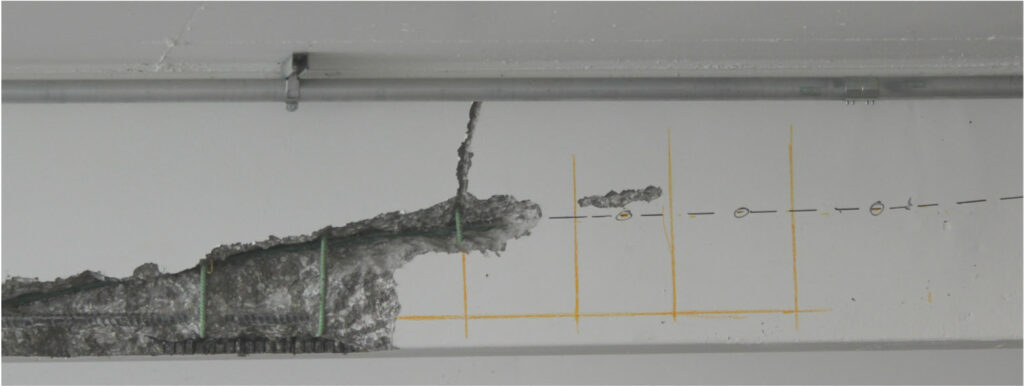RainierGPR Concrete Scanning: Ensuring Safety And Security and Performance in Building and construction
RainierGPR Concrete Scanning: Ensuring Safety And Security and Performance in Building and construction
Blog Article
Discovering the Trick Benefits of Concrete Scanning in Building Projects
In the world of contemporary building practices, the utilization of concrete scanning technology has actually arised as a crucial device for making sure job efficiency and structural honesty. From boosting precaution to accurately identifying utilities concealed underneath the surface area, the advantages of concrete scanning are complex. The capacity to improve job timelines and lower prices while maintaining existing structures is a testimony to the value this innovation offers the building and construction market. As we explore the nuanced benefits of concrete scanning, it becomes obvious that its effect expands far past surface-level evaluations, supplying a look into the complex web of benefits waiting to be uncovered.
Improved Security Procedures
Making use of advanced concrete scanning modern technology enhances precaution on building and construction websites by providing accurate detection of prospective dangers concealed under the surface area. This modern technology enables building groups to recognize rebar, avenues, post-tension wires, and various other blockages prior to excavation or boring, significantly decreasing the risk of accidents. By pinpointing these elements precisely, employees can avoid damaging vital structural components, thus preventing injuries, delays, and expensive repairs.
In addition, concrete scanning plays an essential duty in making sure the stability of existing structures during remodellings or developments. By identifying weak points, spaces, or damage within concrete elements, engineers can address these concerns proactively, improving the overall safety and security and longevity of the structure. This proactive approach not just reduces the risk of structural failures but additionally reduces the potential for crashes brought on by unforeseen structural shortages.
Essentially, the implementation of concrete scanning modern technology acts as an aggressive security step that safeguards both construction employees and the structural honesty of buildings, inevitably contributing to the total success and effectiveness of building tasks. - RainierGPR Concrete Scanning
Accurate Detection of Energies
Concrete scanning technology promotes accurate recognition of underground energies, enhancing building website safety and effectiveness. Exact detection of energies is vital in building and construction jobs to prevent expensive problems, job hold-ups, and most importantly, make sure the safety and security of workers and the public. By making use of innovative scanning innovations such as ground-penetrating radar (GPR) and electromagnetic induction, building teams can draw up the area of hidden pipes, cables, and other energies with high degrees of precision.

Time and Expense Efficiency

Concrete scanning modern technology enables building groups to precisely find rebar, post-tension cords, and various other embedded items within concrete frameworks. This accurate details helps in preventing pricey mistakes such as unintended damages to vital components during boring, reducing, or coring tasks. Furthermore, by recognizing possible risks in advance, the demand for expensive repair work or remodel due to damages can be lessened, bring about set you back savings for the job.

In addition, the capacity to quickly and properly spot utilities underneath the surface area without creating any damage not only saves time yet additionally protects against expensive disturbances to existing infrastructure. Overall, the time and cost performance advantages of concrete scanning make it an indispensable device for improving building job administration and execution.
Preservation of Structural Stability
Protecting the structural integrity of buildings and infrastructure is paramount in ensuring long-term security and safety. Concrete scanning plays a critical role in this preservation procedure by permitting building experts to identify possible dangers to the architectural integrity of a structure or framework right here before they escalate right into significant issues. Via using sophisticated scanning innovations such as ground-penetrating radar (GPR) and electromagnetic induction, building and construction groups can non-invasively evaluate the problem of concrete frameworks, situate rebar, post-tension wires, and various other embedded elements, and identify any kind of voids, fractures, or damage within the concrete.
Improved Task Planning
In order to make sure the effective execution of building projects, precise attention to detail and extensive planning are crucial parts that stem from a comprehensive understanding of the structural problems determined via concrete scanning. Eventually, including concrete scanning into the project planning phase improves coordination among group members, cultivates aggressive problem-solving, and contributes to the effective shipment of building jobs within budget and routine restrictions.
Conclusion
Finally, concrete scanning offers countless benefits in construction tasks. By enhancing precaution, precisely discovering energies, improving time and price performance, preserving structural integrity, and aiding in job planning, concrete scanning confirms to be a crucial tool for successful project implementation. Its capability to mitigate threats, enhance efficiency, and make certain job integrity makes it a crucial asset for construction experts.
In the world of modern building techniques, the use of concrete scanning modern technology has arised as a critical device for guaranteeing task efficiency and structural integrity.Concrete scanning innovation makes it possible for building groups to accurately find rebar, post-tension wires, and other ingrained objects within concrete structures. Via the use of sophisticated scanning modern technologies such as ground-penetrating radar (GPR) and electromagnetic induction, building groups can non-invasively assess the condition of concrete frameworks, locate rebar, post-tension cable televisions, and various other ingrained elements, and identify any type of gaps, splits, or wear and tear within the concrete.
In order to make certain the successful execution of building jobs, thorough focus to detail and extensive find out here now preparation are essential components that stem from a detailed understanding of the architectural problems recognized via concrete scanning. Inevitably, including concrete scanning right into the task preparation phase boosts coordination amongst group participants, fosters proactive problem-solving, and contributes to the effective delivery of building jobs within budget plan and timetable restraints.
Report this page